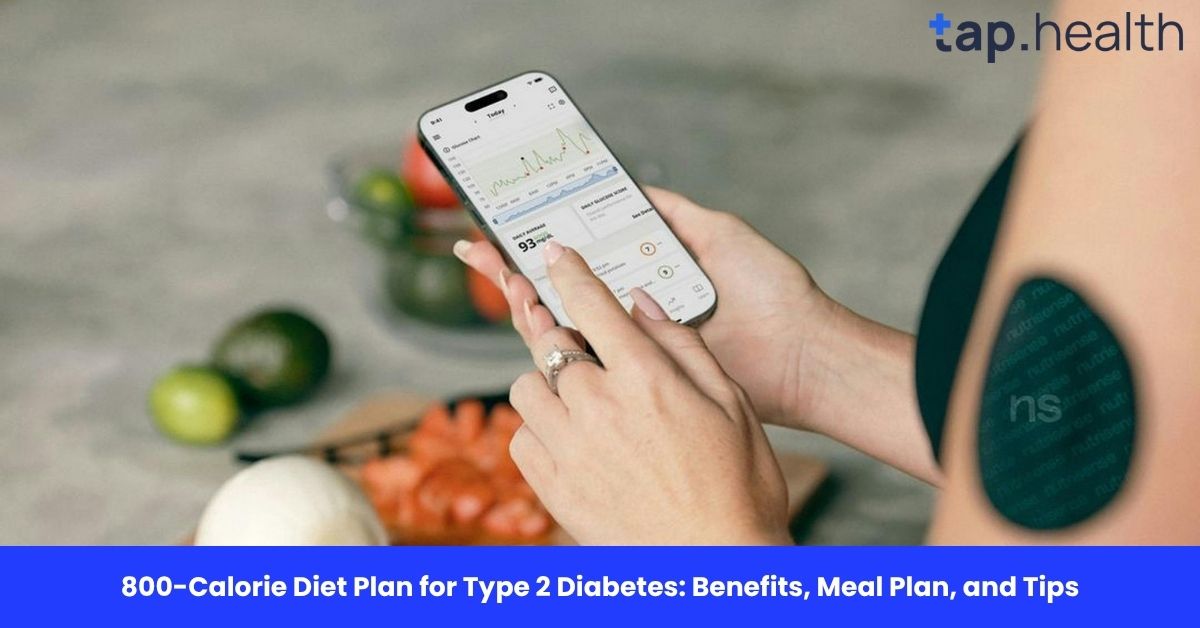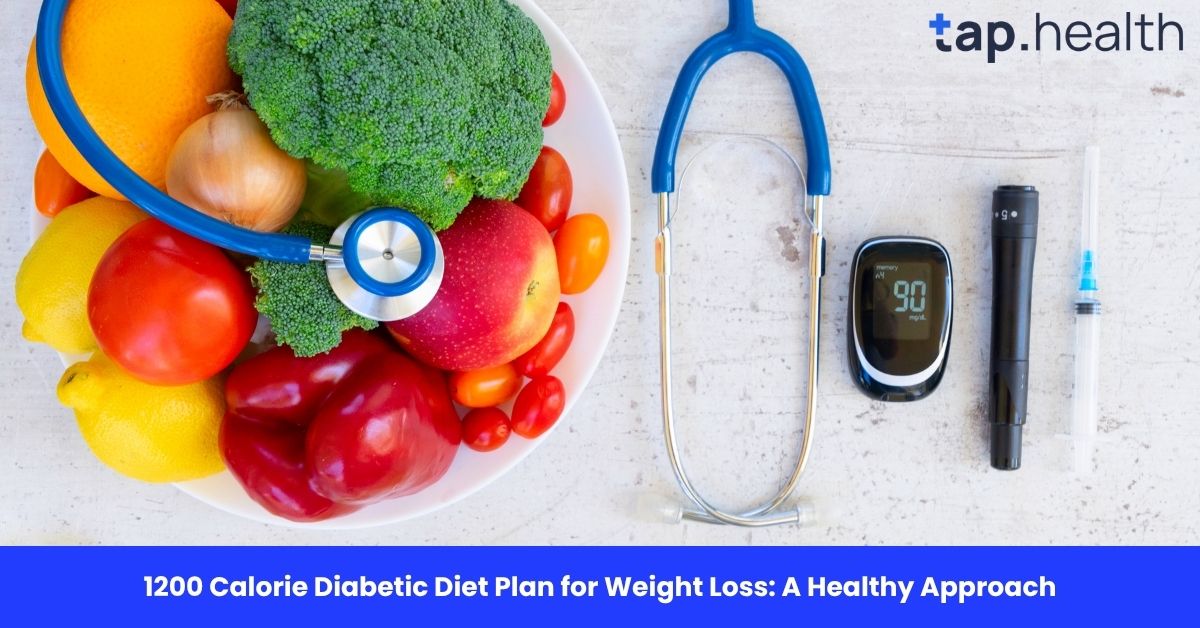Managing diabetes effectively involves a combination of lifestyle changes, including a healthy diet. One diet plan that has been gaining attention is the low-calorie diabetic diet plan, which aims to control blood sugar levels, support weight loss, and improve overall health. This article will explore the benefits of a low-calorie diet for diabetics, offer meal plan ideas, and answer common questions regarding the best diet strategies for managing Type 2 diabetes.
What is a Low-Calorie Diabetic Diet Plan?
A low-calorie diabetic diet plan typically involves reducing your daily calorie intake to a level that encourages weight loss, improves insulin sensitivity, and helps manage blood sugar. For people with diabetes, especially Type 2 diabetes, reducing calories can significantly lower insulin resistance, reduce fat around vital organs (like the liver and pancreas), and improve overall metabolic health.
The general calorie intake for someone on a low-calorie diet varies but typically ranges between 1,200 to 1,800 calories per day. This calorie restriction encourages weight loss, which is essential for people with Type 2 diabetes as it directly impacts insulin resistance.
How Low-Calorie Diets Work for Diabetes
The goal of a low-calorie diet for diabetes is to reduce the overall fat percentage, improve insulin sensitivity, and support weight loss. This helps stabilize blood sugar levels and reduces the risk of complications such as heart disease, kidney failure, and nerve damage. By focusing on nutrient-dense, low-calorie foods, individuals can maintain balanced blood sugar levels throughout the day.
Is a Low-Calorie Diet Good for Diabetics?
Yes, low-calorie diets can be highly beneficial for people with Type 2 diabetes, as they promote weight loss and improve insulin sensitivity. Studies have shown that reducing calorie intake can help individuals with diabetes reduce their blood sugar levels and, in some cases, achieve diabetes remission.
However, the low-calorie diet should be carefully planned to ensure that you receive adequate nutrients and avoid complications such as nutrient deficiencies or muscle loss.
Benefits of a Low-Calorie Diabetic Diet Plan
1. Weight Loss
The most significant benefit of a low-calorie diet is weight loss, which plays a key role in managing Type 2 diabetes. Losing excess weight helps lower insulin resistance, making it easier for your body to regulate blood sugar.
2. Improved Blood Sugar Control
By reducing overall calorie intake, particularly from sugary foods and refined carbohydrates, a low-calorie diet helps stabilise blood sugar levels. This reduces the risk of hyperglycemia (high blood sugar) and hypoglycemia (low blood sugar), improving overall diabetes management.
3. Potential for Diabetes Remission
Research suggests that, for some individuals, a significant reduction in weight through a low-calorie diet can even lead to diabetes remission. This is particularly true for those who start the diet early in their diagnosis and are able to lose a substantial amount of weight.
4. Reduction in Complications
A low-calorie diet can reduce the risk of diabetes-related complications, such as cardiovascular diseases, neuropathy (nerve damage), and kidney disease. By managing blood sugar effectively and losing weight, the likelihood of developing these complications decreases significantly.
What Foods Should Be Included in a Low-Calorie Diabetic Diet?
When following a low-calorie diet for diabetes, it’s essential to focus on nutrient-dense foods that are low in calories but rich in vitamins, minerals, and fibre. Here are the key food groups to include:
1. Lean Proteins
- Chicken breast, turkey, fish, tofu, lentils, and beans are excellent sources of protein. These foods help maintain muscle mass and keep you feeling full, preventing overeating.
2. Non-Starchy Vegetables
- Spinach, broccoli, cauliflower, zucchini, kale, and green beans are all low-calorie and high in fibre, which helps control blood sugar and promotes satiety.
3. Whole Grains
- Oats, brown rice, quinoa, and whole wheat bread are great sources of complex carbohydrates. Though they should be eaten in moderation, whole grains provide fibre, which slows down the absorption of glucose and helps stabilise blood sugar.
4. Healthy Fats
- Olive oil, avocados, nuts (almonds, walnuts), and seeds are rich in monounsaturated fats, which help improve heart health and maintain proper cholesterol levels.
5. Low-Sugar Fruits
- Fruits such as berries, apples, and citrus fruits are low in sugar and high in antioxidants and fibre, making them an excellent choice for a diabetic-friendly diet.
Low-Calorie Diet Meal Plans for Diabetics
Here’s a sample low-calorie diabetic diet plan that can be followed for weight loss and blood sugar control. Remember to consult a healthcare provider before starting any new diet plan to ensure it meets your personal needs.
Day 1:
- Breakfast (250-300 calories):
Scrambled eggs with spinach and tomatoes cooked in olive oil, a small apple or a handful of berries. - Lunch (300-350 calories):
Grilled chicken breast with a side of mixed greens (spinach, cucumber, and tomatoes), and a small portion of quinoa or brown rice. - Snack (100-150 calories):
A handful of almonds or walnuts, or a small cucumber. - Dinner (300-350 calories):
Grilled fish (such as salmon or mackerel) with steamed broccoli and a drizzle of olive oil.
This plan is designed to be nutrient-dense and balanced, focusing on low-calorie options while ensuring you get the necessary nutrients to manage your diabetes effectively.
Low-Carb Meal Plans for Diabetics
A low-carb diet is often recommended for people with Type 2 diabetes as it helps regulate blood sugar by reducing the intake of carbohydrates that can cause blood sugar spikes. Below is a sample low-carb meal plan for diabetics:
Day 1:
- Breakfast (200-250 calories):
A veggie omelette made with eggs, spinach, mushrooms, and a sprinkle of cheese. - Lunch (300-350 calories):
Grilled chicken with a side of non-starchy vegetables like broccoli and salad greens, topped with olive oil and lemon dressing. - Snack (100-150 calories):
A small handful of almonds or a boiled egg. - Dinner (350-400 calories):
Grilled salmon with roasted Brussels sprouts and a side of cauliflower mash.
This low-carb plan helps keep blood sugar levels steady and encourages fat burning, which is beneficial for weight loss.
Key Takeaways
A low-calorie diabetic diet plan can be a highly effective strategy for managing blood sugar levels, achieving weight loss, and improving overall metabolic health. By focusing on nutrient-dense, low-calorie foods such as lean proteins, non-starchy vegetables, and whole grains, individuals with Type 2 diabetes can improve their quality of life and reduce the risk of complications.
Before starting any new diet plan, especially a calorie-restricted one, it’s important to consult with a healthcare provider to ensure the plan is suitable for your individual health needs.
Frequently Asked Questions (FAQ) on Low-Calorie Diabetic Diet Plan
How many calories should a diabetic eat to lose weight?
For weight loss, a diabetic should aim for 1,200 to 1,800 calories per day, depending on individual factors such as age, activity level, and health goals. A healthcare provider can help determine the optimal caloric intake.
How many calories should a diabetic eat for breakfast?
For breakfast, diabetics should aim for 250-400 calories, focusing on a balance of protein, healthy fats, and low-glycemic carbohydrates to prevent blood sugar spikes.
What is a low-calorie diet for diabetes?
A low-calorie diet for diabetes typically limits daily caloric intake to 1,200 to 1,800 calories. The focus is on nutrient-dense, low-calorie foods like lean proteins, vegetables, and whole grains to help manage blood sugar and support weight loss.
What is a low-carb diet meal plan for diabetics?
A low-carb diet meal plan for diabetics involves reducing carbohydrate intake to manage blood sugar levels. Meals include lean proteins, non-starchy vegetables, and healthy fats, with limited whole grains and fruits.
What is a low-calorie diet plan Indian for diabetics?
A low-calorie diet plan for diabetics in India may include vegetables like spinach, cauliflower, lentils, whole wheat roti, grilled chicken, and low-fat dairy. Focus on reducing sugar and refined carbs while incorporating traditional, nutrient-dense foods.
How can I follow a low-calorie diet for weight loss?
To follow a low-calorie diet for weight loss, focus on nutrient-dense foods that are high in fibre and protein, while limiting processed foods, sugary drinks, and refined carbs. Regular monitoring of calories and portion sizes is crucial.
What’s the best diet for a diabetic to lose weight?
The best diet for a diabetic to lose weight includes low-calorie and low-carb foods, focusing on lean proteins, non-starchy vegetables, and whole grains. A balance of protein, healthy fats, and complex carbs helps regulate blood sugar and promote fat loss.
By implementing a low-calorie diet plan, individuals with Type 2 diabetes can improve their blood sugar control, achieve weight loss, and lower the risk of complications associated with the disease. Always consult a healthcare provider before starting a new diet.


